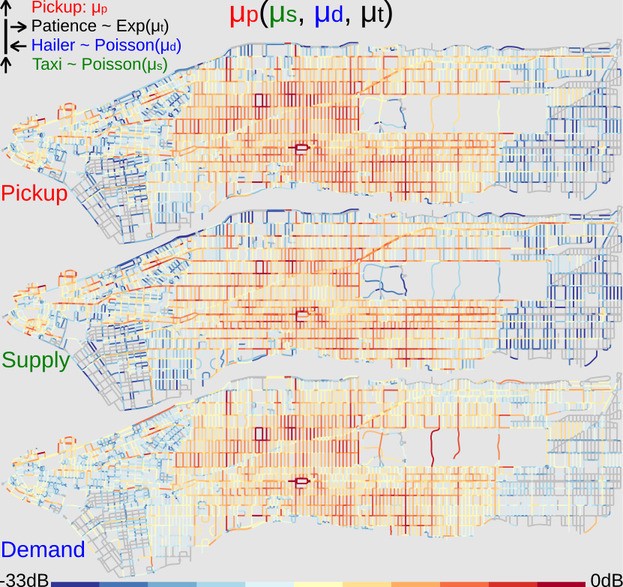Abstract
I use in-vehicle Global Positioning System (GPS) data to estimate the supply and demand of street-hail taxis at segment level of a road network, without surveilling the population. To this end, I model taxi demand and supply as non-stationary Poisson random fields on the road network, and pickups result from taxis searching for impatient passengers on street segments. Relating this model with queueing theory gives pickup rate, and modeling driver income maximization as a symmetric game gives equilibrium supply rate. With 868 million trip records of all 13,237 licensed taxis in New York City from 2009 to 2013—while it was still a monopoly market—I match GPS locations to street segments for pickup and supply, and demand is estimated by solving nonlinear equations. I validate that taxi pickups can be modeled as Poisson processes, and that demand estimates are stable at different supply levels and across years. Our method is thus simple, feasible, and reliable in estimating street-hail taxi activities at high spatial resolution. Contrary to common impression, in high-demand locations street-hail taxis out-perform transportation network companies (TNC) such as Uber, suggesting a taxi/TNC regulation change to reduce congestion and pollution.
